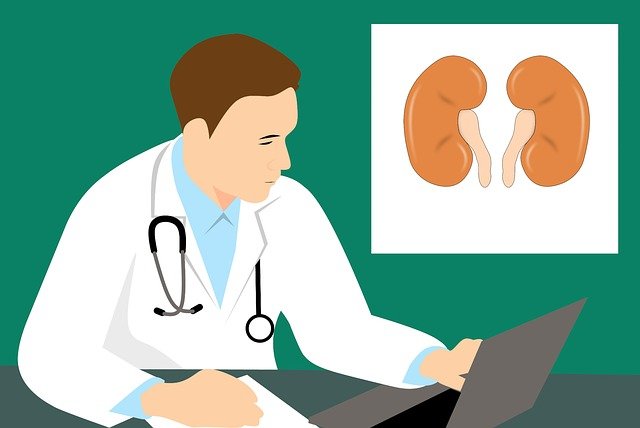There is limited evidence as to whether a history of urinary tract infection (UTI) increases the risk of developing kidney cancer. In addition, it is not clear whether the association of renal cancer with a history of UTI is altered by known risk factors for renal cancer (ie smoking, obesity).
Several research results suggest a positive link between the history of UTI and the development of kidney cancer, with the higher risk being most pronounced in men with a history of smoking.
Most solid kidney tumors are cancerous, but tumors filled with fluid (cysts) are not normal. Almost all kidney cancers are kidney cancer. Another type of kidney cancer, Wilms’ tumor, is most common in children.
Kidney cancer symptoms
Blood in the urine is the most common first symptom, but the amount of blood may be so small that it can only be seen under a microscope. On the other hand, red urine may appear. The other most common symptoms are a pain in the area between the ribs and thighs (on the side), fever, and weight loss. Often, kidney cancer is first reported when a doctor notices an enlargement or lump in the abdomen.
Other unspecified symptoms of kidney cancer include fatigue, weight loss, and early satiety (feeling full after eating). The number of red blood cells may be abnormally high. Symptoms of high red blood cell counts may be absent or may include headache, fatigue, dizziness, and decreased vision.
On the other hand, kidney cancer can lead to anemia due to slow bleeding in the urine. Anemia can cause rapid fatigue or dizziness. Some people may develop hypercalcemia, which can cause weakness, fatigue, slow reaction time, and constipation. Blood pressure may increase, but high blood pressure may not cause any symptoms.
Diagnosis of kidney cancer
Following are two diagnostic tools used for diagnosing the kidney cancer:
- Computed tomography or magnetic resonance imaging
- Occasional surgery
Prognosis of kidney cancer
The prognosis is influenced by many factors, but the 5-year survival rate for people with minor kidney cancer is more than 90%. Cancer that has spread has a worse prognosis. For these people, the goal will always be to focus on preventing the spread of the disease, reducing pain, and other ways to improve comfort. As with all incurable diseases, end-of-life planning is important, including pre-arranged instructions.
Kidney cancer treatment
If cancer has not spread beyond the kidney, removing the affected kidney surgically provides a reasonable chance of recovery. Alternatively, surgeons can simply remove the tumor with the margin of adjacent normal tissue and preserve the rest of the kidney.
In very small kidney volumes (less than 3 inches or about 1.2 inches) or in people who are too ill to allow surgery, the possibility of active monitoring (strict monitoring) or ablation (a procedure performed by radiologists to burn the mass or to freezing).
If cancer has spread to nearby areas, such as the kidney vein or even a large vein that carries blood to the heart (hollow vein) but does not spread to the lymph nodes or distant areas, surgery may still be possible. However, kidney cancer tends to spread early, especially to the lungs, sometimes due to symptoms.
Treatment of older immunotherapy, which is sometimes used in kidney cancer, includes interleukin-2 and interferon alfa-2b. New immunotherapies called checkpoint inhibitors block a molecule in cancer cells called PD-L1 (the “checkpoint”).
Drug combinations are available that include checkpoint inhibitors. Other drugs that are sometimes used to treat kidney cancer include sunitinib, sorafenib, cabozantinib, axitinib, bevacizumab, pazopanib, lenvatinib, temsirolimus, and everolimus. These drugs alter the molecular pathways that affect the tumor and are therefore called targeted therapies.
Various combinations of other interleukins, thalidomide, and even kidney cancer cell-derived vaccines have also been studied. This treatment may be useful in metastatic cancer, although the benefit is usually small.
References

